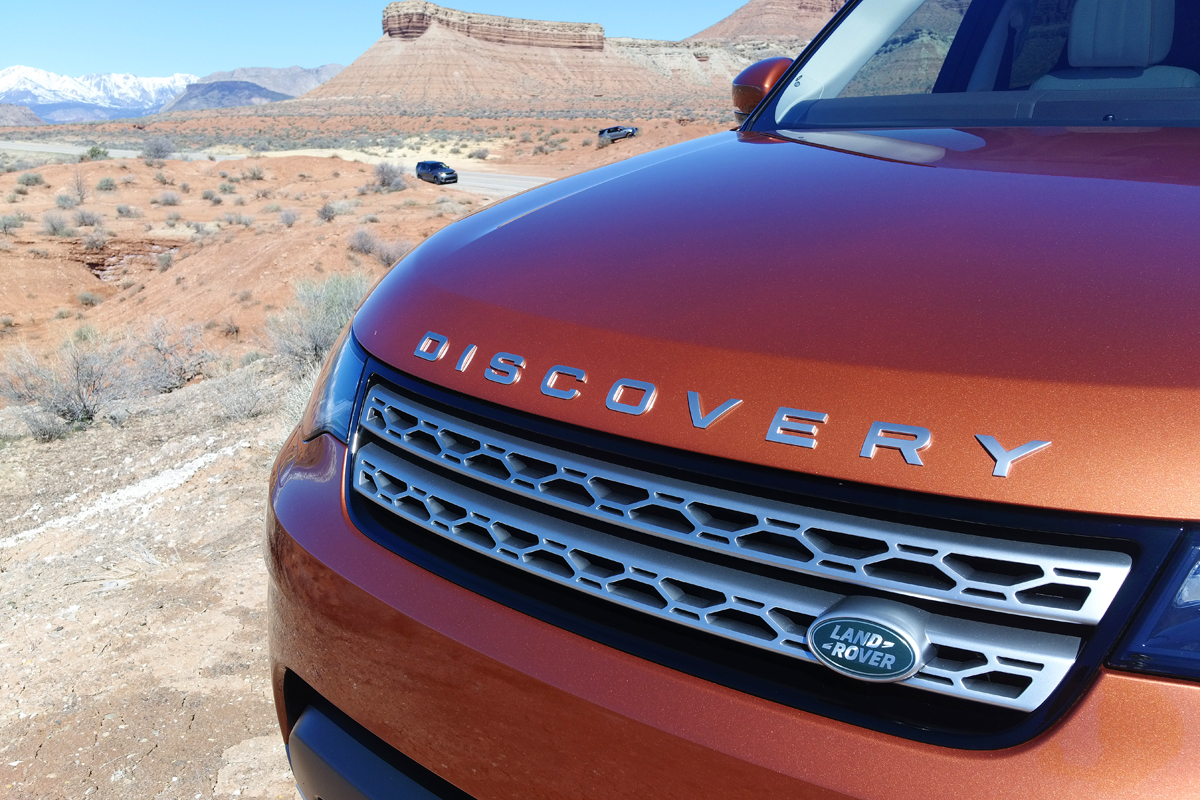Launch of all-new 2017 Land Rover Discovery


Continuing the legacy of a vehicle with a history like the Land Rover Discovery can’t be easy. On the one hand, it’s important to preserve the charm that made the model famous in the first place, yet advance things enough to keep the vehicle relevant for the modern age. The brand appears to have hit the mark with the introduction of the fifth generation model.
At the global launch of the new Discovery just held near the rugged Utah-Arizona border, chief exterior designer at Land Rover, Phil Simmons, spoke to this challenge.
“[Land Rover has] a heritage that other companies would absolutely kill for. We have to be very respectful of that heritage, but at the same time we don’t want to let that heritage hold us back. We need to innovate we need to stay fresh,” said Simmons.

The Discovery retains select design elements from its predecessors, such as the characteristic angular A-pillar and flat, boxy roofline prevalent throughout the lineage. Everything else, however, either improves on prior concepts or breaks the mould entirely.
“One of the driving forces behind the development of this car has been aerodynamics — the outgoing vehicle has a CD (coefficient of drag) of 0.4,” which he added in today’s marketplace is on the high side.
Rather, the reimagined Discovery, or Disco, as the cool kids call it, has a slippery CD of 0.35. It’s pretty obvious without the official specifications though, because when you compare current versus the prior gen many of the hard straight lines are now softer and rounded out. This became especially evident to me when the automaker brought and displayed all the previous models, lining them up in order.

The headlamps undergo one of the most drastic changes becoming a sliver of their former selves, although they haven’t been slimmed down quite as much as the units on the Evoque. Inside, curved LED DRL’s show off the modern signature pattern. The metal mesh grille is nearly equally as skinny, not reaching down far past the bottom edge of the light housings.
The side of the SUV borrows a few items from its smaller sibling the Discovery Sport, namely the notched contrasting wheel arch flares that connect to the rest of the blackened lower bodywork.
Perhaps the biggest visual indicator of innovation and evolution on the vehicle is at the back. For the first time, Land Rover has done away with a two-piece tailgate, opting for a cleaner single-panel unit yielding a larger opening for luggage as well as more effective shelter during inclement weather. A powered cargo floor extension is included that, folded out, prevents scratches to the bodywork when loading and unloading, and acts as a handy seat to boot.
In-between the horizontally stretched out LED taillamps lies an asymmetrical license plate recess. An emblem is inset into the narrow portion, and the plate is installed in the wider end.

After my co-driver and I spent a couple of days behind the wheel covering in excess of 500 kilometres, I got to really know the interior, especially the InControl Touch Pro infotainment system. Everything from entertainment to navigation to vehicle information, down to a graphical representation of the suspension and differential movements while off-roading, is shown and manipulated via the widescreen touch-sensitive monitor.
There are seven seats in the cabin, all endlessly configurable using automatic switches. Smartphone saavy users can also download the companion app and adjust the positioning remotely on their mobile device.
Before getting back to talking about how the Disco performs off-road, an introduction to the powertrains. Two 3.0-litre V6s are available, one a turbocharged diesel producing 254 horsepower and 443 lb-ft of torque, the other a supercharged gasoline engine making 340 hp and 332 lb-ft of torque, both mated to ZF eight-speed automatic transmissions.

The absolute highlight of the trip had to be the extensive testing done off the beaten path. Boasting 282 millimetres of ground clearance — 43 more than the LR4 — nothing stands in its way, be it logs, ruts or rocks. The SUV features Terrain Response 2 technology, optimizing traction for different environments like gravel, sand, snow, mud and so on. The real beauty of the system is the automatic mode capable of switching modes on the fly when the multitude of onboard sensors detects changes in surface conditions.
One impressive exercise was climbing up a steep rock wall, and then opening and closing the driver’s door to show minimal flex in the primarily aluminum structure. Another was traversing massive sand hills at Coral Pink Sand Dunes State Park (momentum is your friend), all done on the standard all-season tires the vehicles come with from the factory.
The all-new Land Rover Discovery will be sold in three trim levels: SE, HSE/HSE Td6 diesel and HSE Luxury and should hit stores by mid-2017.


